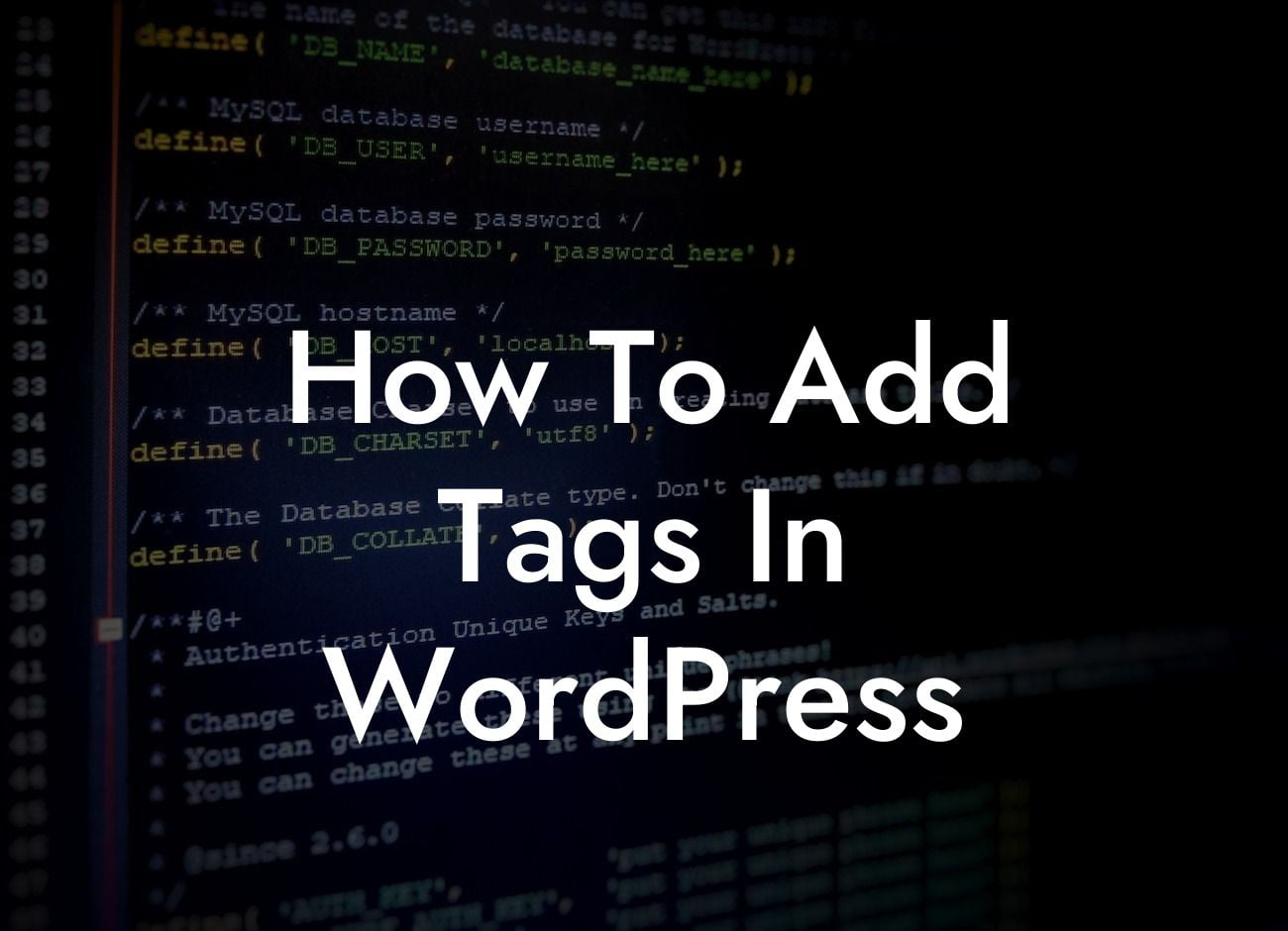Adding tags to your WordPress posts is a simple yet powerful way to enhance your website's organization and improve its discoverability. Tags allow you to categorize and label your content, making it easier for both search engines and visitors to navigate your site. In this comprehensive guide, we will walk you through the process of adding tags in WordPress, offering valuable insights and expert tips to help you optimize your tags for better SEO performance.
Adding Tags in WordPress: A Step-by-Step Guide
1. Accessing the Tags Section:
To begin adding tags to your WordPress posts, you need to access the Tags section within your WordPress dashboard. Simply log in to your dashboard and navigate to the "Posts" menu. From there, click on "Tags" to open the Tags management page.
2. Creating New Tags:
Looking For a Custom QuickBook Integration?
Once you are on the Tags management page, you can proceed to create new tags. Start by entering the desired tag name in the "Name" field. Make sure to use relevant keywords that accurately describe the content of your posts. WordPress also provides a "Slug" field, which is the URL-friendly version of your tag name. In the "Description" field, you can add a brief explanation of the tag's purpose or relevance. Finally, click on the "Add New Tag" button to create the tag.
3. Assigning Tags to Posts:
After creating the tags, it's time to assign them to your posts. While writing or editing a post, look for the "Tags" section on the right-hand side of the editor. Enter the desired tags in the text box, separating each tag with a comma. WordPress will automatically suggest existing tags as you type, helping you maintain consistency and avoid duplications. You can also choose to display your tags in a cloud widget or within your post content.
4. Optimizing Tags for SEO:
To maximize the SEO benefits of tags, it's essential to optimize them effectively. Here are some key tips:
- Use relevant and specific keywords: Choose tags that reflect the main topics or themes of your posts. Ensure they align with the language your target audience is using when searching for relevant content.
- Avoid excessive use of tags: While it's tempting to include numerous tags, it's best to focus on a few relevant and specific ones. Too many unrelated tags can dilute your content's relevance and confuse search engines.
- Monitor tag popularity: Keep an eye on which tags are driving the most traffic to your site. Use analytics tools to identify popular tags and create more content around those topics to increase visibility.
- Cross-link related tags: Interlink your tags to create a more coherent structure within your website. This not only aids navigation but also helps search engines understand the relationships between different topics on your site.
How To Add Tags In Wordpress Example:
Imagine you run a website that focuses on vegetarian recipes. When adding tags to a post about a delicious tofu stir-fry recipe, some suitable tags could include "vegetarian recipes," "tofu stir-fry," "healthy cooking," and "plant-based meals." By assigning these relevant tags, you are helping search engines index your content and assisting visitors in easily finding the recipes they are looking for.
Congratulations! You are now equipped with the knowledge and techniques to add tags in WordPress effectively. Take advantage of the organizational and SEO benefits tags offer by implementing them consistently across your posts. Don't forget to explore DamnWoo's wide range of exceptional WordPress plugins and resources tailored specifically for small businesses and entrepreneurs. Keep enhancing your online presence, and remember to share this article with others who might find it valuable. Together, let's embrace extraordinary results.
[Call-to-action: Explore DamnWoo's plugins now!] [Button: Explore Plugins]













